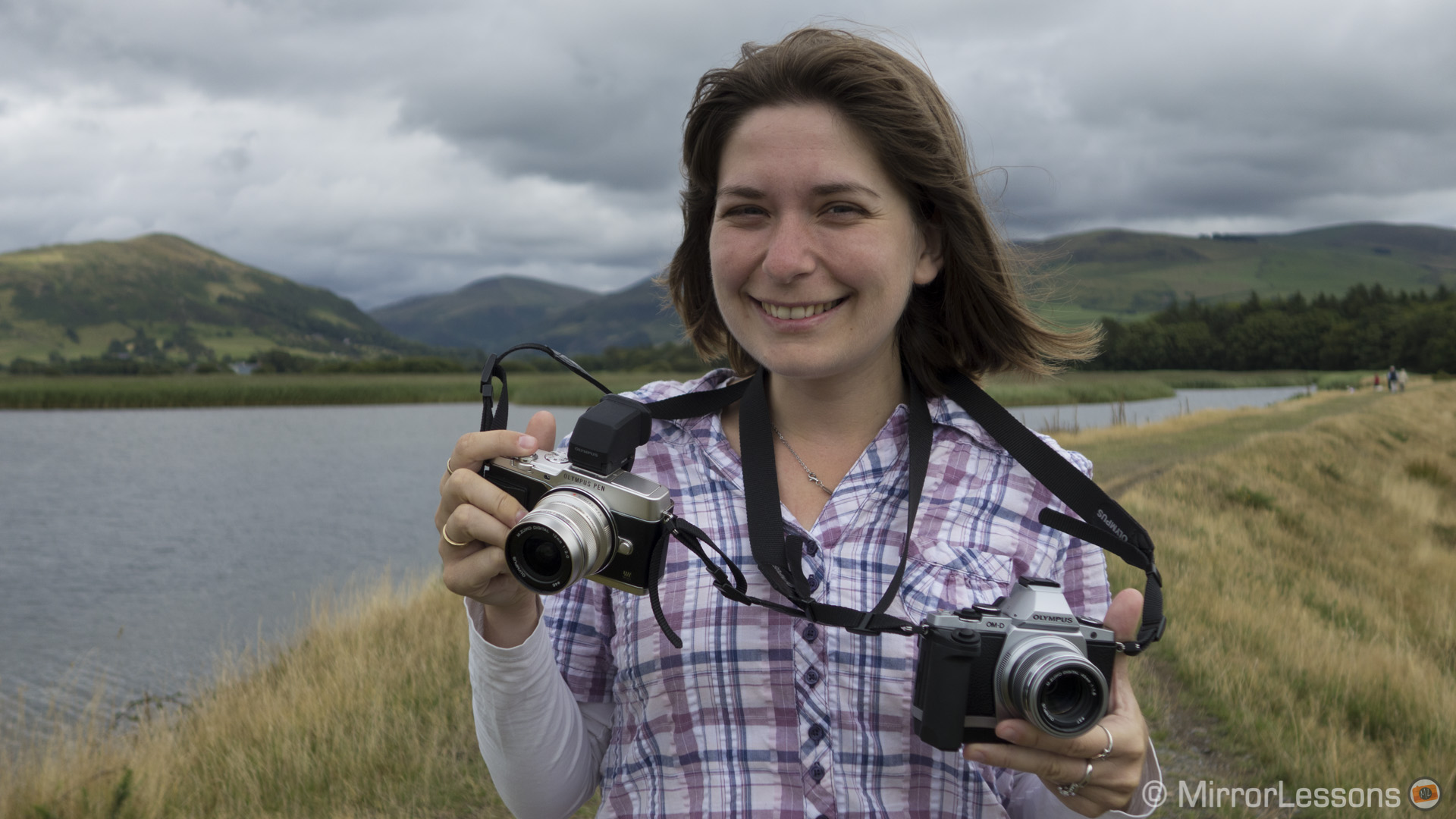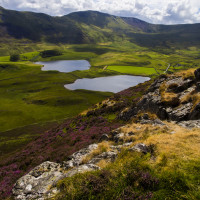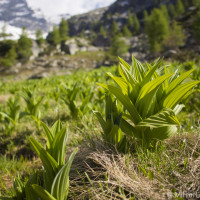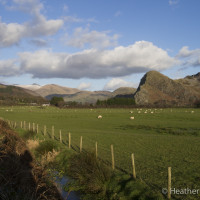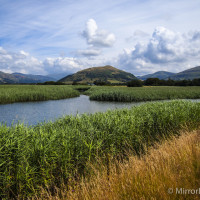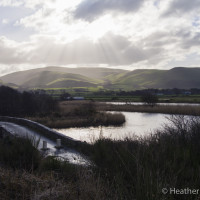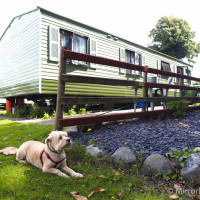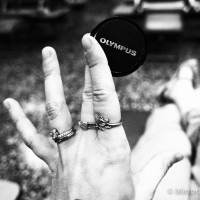The Olympus Pen series has always sat one notch below the OM-D E-M5 in terms of quality. Never would we have expected that out of the middle-end Pen series, a serious competitor for the OM-D would be born – that is, until the Pen E-P5 came onto the scene. Now, like Olympic swimming champion Michael Phelps and teammate Ryan Lochte, the OM-D finds itself with a formidable rival on its own team. Which is better? And more importantly, which is more suited to you as a photographer? Well, you’ll have to read this comparison to find out!
A note about our style of comparing cameras:
On this site, you won’t find scientific comparisons but rather our personal experience with each camera based on real-world usage. For more information about the cameras, you can check out our full reviews and galleries across the site (relevant links are mentioned throughout the article). And remember, this comparison isn’t just about us and our opinions. If you too have had the chance to use both of these cameras and want to share your opinion about them, feel free to leave us a comment. We would love to hear your two cents!
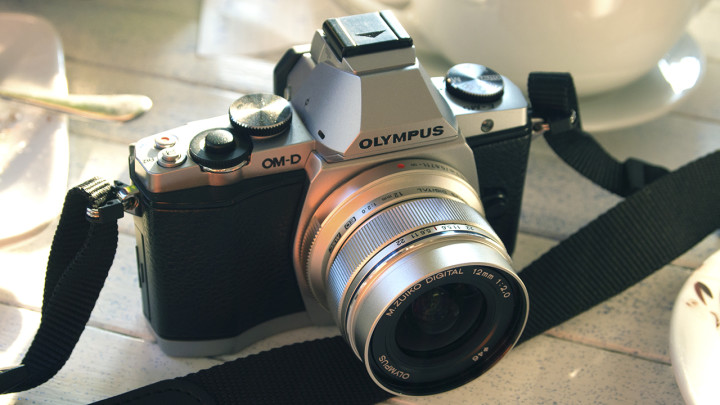
Olympus OM-D E-M5
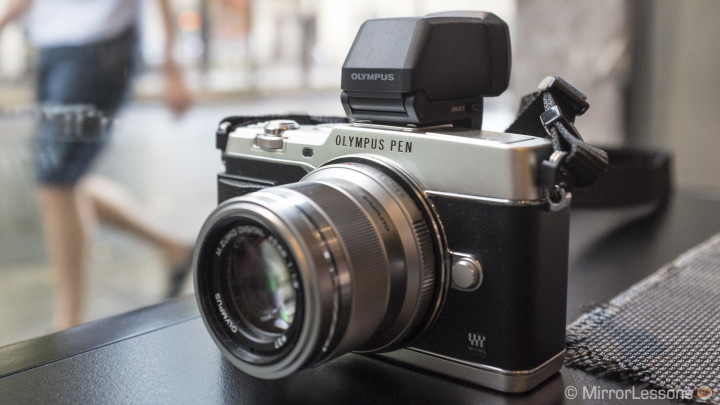
Olympus Pen E-P5
Main Specs
Not only are the OM-D E-M5 and Pen E-P5 made by the same brand, but they also share the same Micro 4/3s 16MP Live MOS sensor and lens mount. This means that they have the same image quality. Though they share many of the same technical specifications, there are a few differences which could make or break your decision to buy one or the other.
[stextbox id=”text-box-toc” caption=”Specs list” collapsing=”true” collapsed=”false”]
OM-D E-M5
- Sensor: 16.1 megapixels 4/3 Live MOS Sensor
- Lens system: Micro Four Thirds interchangeable lens system
- ISO Sensitivity: 200 – 25600 ISO
- Continuous shooting: 9 fps with single AF mode
- Autofocus: Autofocus with image contrast detection system and 35 focusing points
- Focus Peaking: No
- Internal Stabilization: Yes (5 axis image stabilisation)
- Viewfinder: Eye-level electronic viewfinder, approx. 1.44M
- LCD Screen: 3.0-inch tilting OLED monitor, approx. 610k dots, Touch control
- Movie recording: Full HD: MOV (MPEG-4AVC/H.264 ) and AVI (Motion JPEG), interlaced, up to 20 mbps
- Weather-sealed: Yes
- Sensor Cleaner: Yes (Supersonic Wave Filter (dust reduction system for image sensor)
- Built-in Flash: No (but an external flash is provided with the camera)
- Built-in Wifi: No
- Dimensions: 121 x 89.6 x 41.9mm
- Weight: Approx. 373g
Pen E-P5
- Sensor: 16.1 megapixels 4/3 Live MOS Sensor
- Lens system: Micro Four Thirds interchangeable lens system
- ISO Sensitivity: 200 – 25600 ISO (extendable to 100)
- Continuous shooting: 9 fps with single AF mode
- Autofocus: Autofocus with image contrast detection system and 35 focusing points
- Focus Peaking: Yes
- Internal Stabilisation: Yes (5 axis image stabilisation)
- Viewfinder None (external VF can be mounted on the hotshoe)
- LCD Screen: 3.0-inch tilting LCD monitor, approx. 1037k dots, Touch control
- Movie recording: Full HD: MOV (MPEG-4AVC/H.264 ) and AVI (Motion JPEG), interlaced, up to 20 mbps
- Weather-sealed: No
- Sensor Cleaner: Yes (Supersonic Wave Filter (dust reduction system for image sensor)
- Built-in Flash: Yes
- Built-in Wifi: Yes
- Dimensions: 122 x 68.9 x 37.2mm
- Weight: Approx. 378g
[/stextbox]
Ergonomics and Design
While both have retro-styling and are made by the same company, the ergonomics and design aren’t the same…
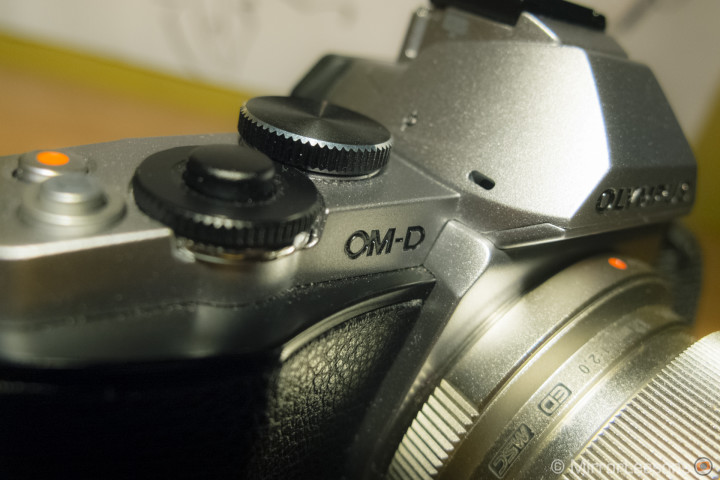
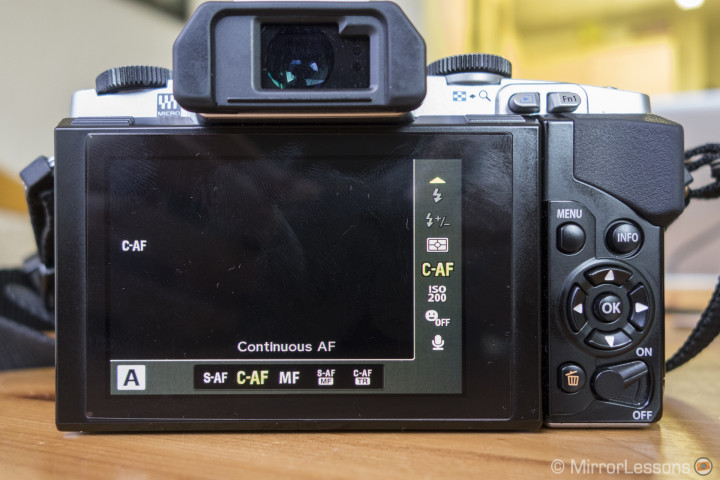
The OM-D’s design is based upon the original Olympus SLR design from the analog days of photography. It is slightly smaller than its predecessor but has that familiar solid metal build. The aperture and shutter speed dials are sturdy and easy to turn, but the various buttons on the top and rear, such as the Live view button, are quite small and delicate. The grip is better when combined with the E-M5 additional landscape grip.
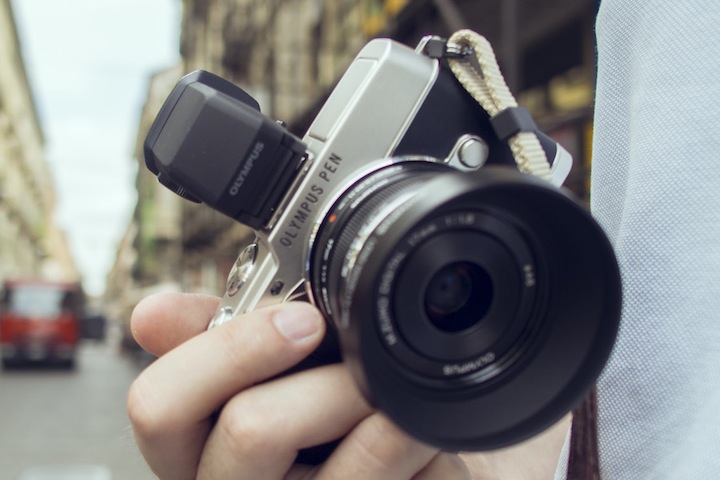
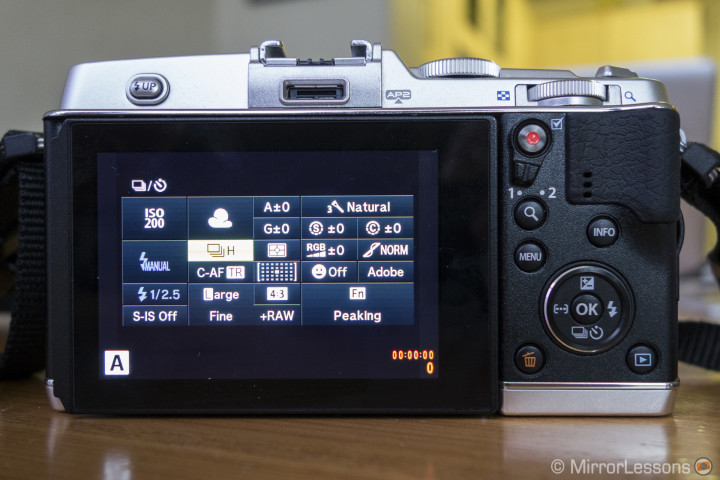
The E-P5’s design is also based on an old Olympus series – this time, the Olympus Pen F line. It too has a solid metal build which brings back fond memories of film cameras. Like the OM-D, It features a pair of solid aperture and shutter speed dials, but the buttons and switches are far less delicate. The grip is good and I find it slightly better than the OM-D (without the extra grips). There isn’t an additional hand grip you can attach to the bottom of the E-P5.
The biggest difference between the two models is that the OM-D has a built-in viewfinder whereas the E-P5 has a hotshoe where you can insert an external viewfinder such as the VF-4. Sadly, this reduces the compactness of the E-P5. Without the external viewfinder, the two cameras would almost be the same size.
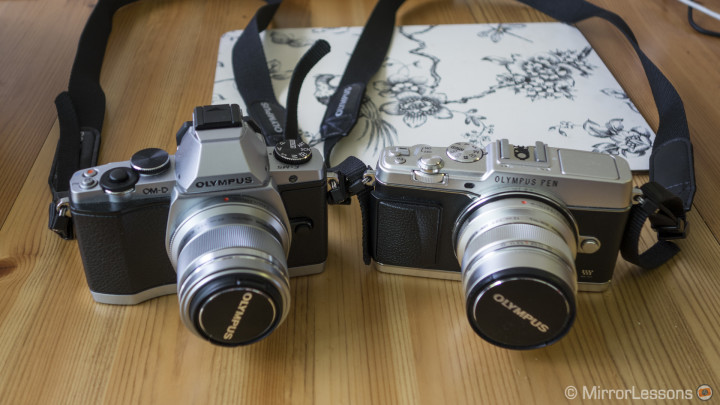
The OM-D is ever-so-slightly bigger in overall size (121 x 89.6 x 41.9mm) but weighs a little less than the E-P5 (373g instead of 378g).
There are a few differences in how certain buttons and dials are positioned, like the Mode dial, the playback button and the on/off button.
A notable difference is the presence of a handy toggle switch on the E-P5 to which you can assign a variety of functions to the rear and front dials, the most useful being Shutter Speed/Aperture in the 1 position, and White Balance/ISO for the 2 position.
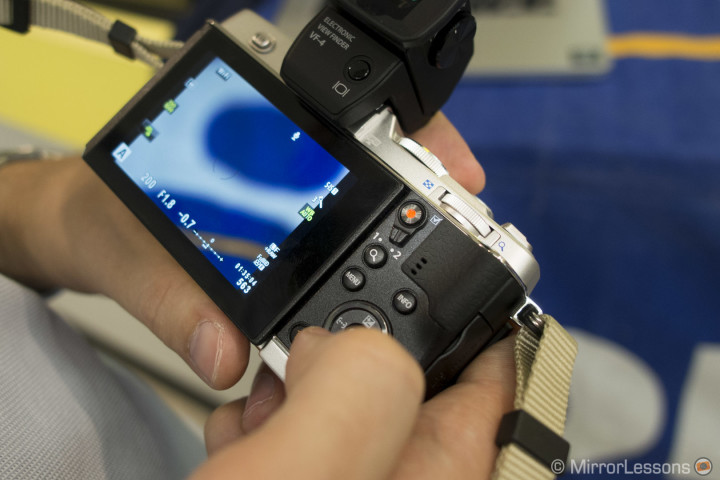
Finally, the OM-D’s body is weather-sealed whereas the E-P5’s body is not. However, this is really a moot point as many Olympus lenses aren’t weather-sealed either. Either way, you’ll have to protect your camera in medium to heavy rain.
Functionality & Ease-of-Use
The two cameras share almost exactly the same menu system…
The only difference between the menus is the addition of a few features to the E-P5, such as focus peaking. The main settings of the cameras can be accessed by pressing the OK button in the middle of the sub-command dial (but the way it displays has been slightly improved on the E-P5). Most photographers are in agreement that the Olympus menu system isn’t the easiest to navigate at first, but you get used to it over time.
Both cameras feature a high quality 3-inch touch and tilt screen. The touch sensitivity is basically the same on both models, and is very effective, especially when you want to quickly change the focus point or take a picture by just touching the screen.
The OM-D’s screen is OLED, meaning that it is able to achieve a higher contrast ratio in low-light conditions. It has less resolution (610 dots) than the screen of the E-P5.
The E-P5’s screen is an LCD and features a screen resolution of 1037k dots. It is very bright and sharp and this helps outdoor in bright sunshine.
As for the viewfinder…
The E-M5’s viewfinder produces a very sharp and clear image. I find that it isn’t always accurate for white balance but it’s a small issue in the grand scheme of things.
The external VF-4 viewfinder, which was made for the E-P5 (sold separately), is an improvement on the built-in viewfinder of the OM-D, with a magnification factor of 1.48x and 100% field of view. It is functional and pleasant to use and you can really see the difference over the OM-D EVF. The only real drawback is that it feels a little bit too plastic on the great metal build of the E-P5, and therefore makes the combo a little bit more delicate. You also may feel compelled to remove it when you place the camera in your bag (depending on the size of the bag, of course).
Image Quality
The OM-D and E-P5 share the same 16.1 MP Micro 4/3s sensor. To point out differences would be like comparing apples to apples.
Colour reproduction is excellent on both cameras. I have a particular fondness for the vivid colour profile as it generates some exquisite shades of green and blue. You have the option of selecting warmer or cooler colours for the auto white balance mode as well.
The ISO range of the OM-D is 200-25600. It performs very well in low-light situations with more than decent images of up to 6400 ISO.
Note: Olympus released a firmware update (version 2.0) in January 2014 that expands the ISO range to Low (100) on the low sensitivity side.
The E-P5 is also very capable in low-light situations. Like the OM-D, it can reach 25600 ISO, and images are perfectly usable up to 6400 ISO. The one difference between the two cameras is that the E-P5 has an extended Low ISO of 100. Using this ISO may reduce dynamic range but the difference is almost imperceptible.
Below is an informal gallery featuring pictures taken with both cameras in various locations and situations. The dynamic range is very good despite the smaller sensor, and the details preserved in the highlights and shadows are quite impressive. It should be no surprise that I am planning to use both cameras for work!
You can also visit these additional OM-D galleries:
15 Pictures of the Alps taken with the OM-D E-M5
Alessia: An Olympus OM-D E-M5 Portrait Session
You can also visit these additional E-P5 galleries:
Painting with Light in Wales: An Olympus Pen E-P5 Landscape Gallery
Trailing the British Butterflies: An Olympus Pen E-P5 Gallery
Autofocus & Performance
Both cameras perform very similarly in terms of speed and autofocus. Their speed is owing to Olympus’ TruePic VI engine.
The OM-D has a lickity-quick speed of 9fps in H mode and 4fps in L mode.
The AF is also very fast and locks onto almost any subject instantaneously, though it does struggle a little in low-light conditions.
The E-P5 also has 9fps, but continuous shooting in L mode has been raised to 5fps.
AF has no trouble locking onto subjects quickly and accurately in most situations. It seems to be slightly faster than the E-M5, but you will hardly notice the difference. Like the OM-D, it may take a little longer to focus in low light.
We tested the two cameras side-by-side in AF-C and AF-Tracking mode to see if some improvements have been made on the E-P5.
The lens we used was the Lumix 35-100 f/2.8. The test focused on a person (Heather) running towards me. “Keep in mind” that both cameras perform better if you set the continuous shooting speed to Low instead of High. If you don’t, they will both start to lose their ability to track.
After performing this quick test, I would say that they perform similarly–there wasn’t any noticeable difference between the two for either AF-C or AF tracking. In both cases, AF tracking is more trustworthy if the subject is wearing a distinctive colour.
Both feature Olympus’ excellent 5-axis internal stabilisation which means you can use any lens with these cameras and not worry about your images becoming blurry. In our experience, you can achieve sharp images even at 1/2.5 of a second if you keep your hand steady.
As for shutter speed, the OM-D can attain a maximum of 1/4000s with its mechanical shutter. It is enough for most situations.
The shutter is very quiet–so quiet that you can use it during a church service or wedding ceremony without disturbing the audience.
The E-P5 improves on the OM-D by adding a 1/8000s option. This is useful when, combined with the Low ISO 100, you wish you achieve a shallow depth of field in bright sunlight in the case that you don’t have an ND filter.
Strangely, the E-P5’s shutter is noticeably louder than that of the E-P5, though it isn’t nearly as loud as a DSLR. You will find that it might disturb the audience during quiet church services or theatrical performances for instance.
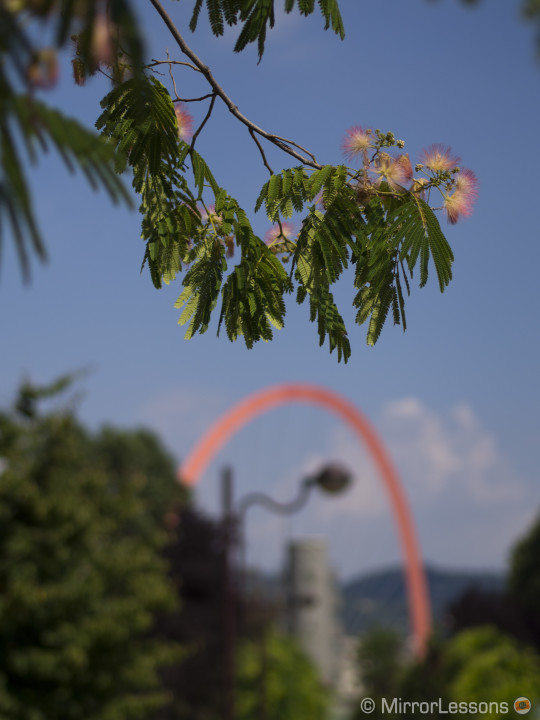
Note: several reports highlighted a shutter shock issue with the E-P5 and internal stabilisation at give shutter speeds between 1/80s and 1/250s. While I haven’t experienced the problem personally with my camera, Olympus added a “0 second” setting to Anti-Shock mode with the firmware update version 1.4.
Video Capabilities
There is no difference in the video capabilities of the OM-D and E-P5. Both use 3-axis stabilisation instead of 5 which still renders videos fluid and steady, they shoot in Full HD / 30p recording which is perfectly acceptable for amateur video creation, but won’t satisfy European users as much would rather prefer a 25p option. I only wish that Olympus and Panasonic would combine the in-body stabilisation with the video quality of the Lumix line – that would be a dream come true!
User report: as stated by Nelson in the comments section below, the E-P5 has a magnify function (x4) accessed through a dedicated button that will also work during video recording, something you can do with the OM-D (x2) only before you start to record.
Below you can see how well in-body stabilisation works for video. (Example clip filmed with the E-P5.)
Note: the video states 5-axis stabilisation instead of 3 because we believed that this was the case originally. We apologise for the error.
Other Features
The E-P5 has WiFi capabilities while the OM-D does not
Wifi is all the rage these days, which is why Olympus went ahead and included a virtual WiFi button on the E-P5 LCD screen. The function works very well on some devices such as the iPhone, but struggles on others such as the Samsung Galaxy. (I was unable to scan the QR code.) The Wifi needs to be improved and simplified for it to become a practical option people will regularly use. Also, it will only transfer JPGs, not RAW files.
There are a number of Art Filters and Scene Modes on both the OM-D and E-P5
The Art Filters are fun to use if you are looking to create silly effects outside of Photoshop, but that’s about it. Thankfully, every photo you take using the filters is accompanied by a RAW file which remains unaffected. If you are just coming to grips with advanced mirrorless cameras like these two Olympus models, the Scene Modes are a gentle introduction to various styles of photography such as Nature Macro, Night Portraits, or Sports. Below some quick examples taken with the E-P5.
The E-P5 has a built-in pop up flash while the OM-D does not
The OM-D doesn’t have a built-in flash but one tiny little flash is provided when you purchase the camera. It is nothing like a professional external flash, but it can get the job done when needed. Since it is more useful for casual flash needs, having to remember to bring it with you and mount it isn’t as convenient as a built-in flash.
The pop-up flash on the E-P5 is a handy addition, though the flash button is very sensitive and pops up when you least expect it. It works in both Auto and Manual mode (Full, 1/4, 1/16, 1/64).
The E-P5 has a focus peaking option
The OM-D could really have benefitted from a focus peaking option, which is why Olympus decided to include black and white focus peaking in its new flagship model, the E-P5. Sadly, the quality isn’t as good as that on other models such as the Fujfilm X100s or Sony RX100M2, to name two examples we are familiar with. This isn’t to say that it isn’t useful; I have used it for macro photography quite often, and have found it a great asset. However, I do feel Olympus as a way to go before it catches up with its competitors.
As for battery life…
The battery life is basically the same for both, as they use the same battery. One battery will usually last a full day of casual shooting. If you are on the job, it is best to have a back-up battery especially if you use accessories such as an external VF or a landscape grip for the OM-D.
Conclusion
The OM-D E-M5 and Pen E-P5 are the current pride and joy of the Olympus line, and will retain that position until the new high-end OM-D charges onto the scene later this year. They are light, compact, versatile and produce a level of image quality that is more than acceptable for professional assignments such as weddings, events and theatrical performances.
The E-P5 has many interesting features such as 1/8000s shutter speed, Low 100 ISO, focus peaking and Wi-Fi capabilities. The functionality of the camera and the buttons have been improved and the toggle switch is definitely a great addition. It lacks a built-in viewfinder which is something that in my opinion you will end up purchasing, so it is an extra cost to consider. Keep in mind that using a viewfinder will limit the usability of the hotshoe for other accessories such as an external flash or a stereo microphone, so in terms of pure usability, you will need to compromise to get the most out of it.
The OM-D, on the other hand, is weather-sealed, has a built-in viewfinder and some extra optional accessories such as a landscape and portrait grip that can be very useful. Also, the hotshoe is free to be used with other accessories, so it still makes it the flagship model for Olympus for professional use.
That being said, I can see the E-P5 being the perfect companion for the OM-D for my work. They are incredibly quick both in terms of autofocus and continuous shooting and as I already mentioned, they share the same image quality.
So with critical aspects such as compactness, speed and quality out of the way, your choice will depend more on the nonessential features you value in a camera.
Choose the E-M5 if:
– you want a built-in viewfinder
– you want to pay less (being an older model, the E-M5 has come down in price)
– you want a weather-sealed body
Choose the E-P5 if:
– you would enjoy uploading photos to your smart devies directly from the camera
– you prefer having a built-in pop-up flash
– you often manual focusing and the focus peaking could prove very useful
